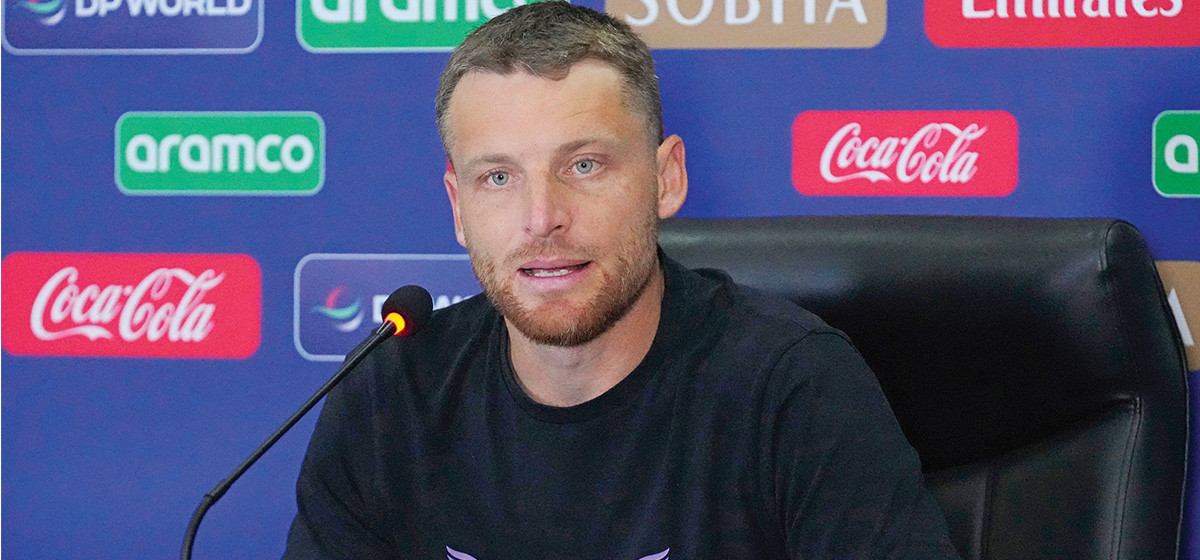POKHARA, Feb 24: Pokhara city, which is the tourist hub of the country, has been plagued by air pollution. Despite heavy rains, pollution within the city has not decreased. According to the Department of Environment, the air quality index of Pokhara has reached dangerous levels.
The impact of pollution is also noticeably observed on the health of the people as health workers reported an increased number of patients with chest problems in Pokhara. The tourism sector of the city is equally worried due to the increase in pollution. Businessmen are concerned that the arrival of guests may be affected as Pokhara is polluted at the beginning of the tourist season.
According to the Department of Environment, Pokhara's air quality index reached 361 at 8 am on Sunday. The department said that the pollution measuring device located in the Gandaki Boarding School (GBS) premises in Lamachaur, Pokhara shows that the air quality index of Pokhara is increasing day by day. This suggests that air pollution in Pokhara has reached a hazardous level, according to the department.
Gobinda Prasad Lamichhane, the department's environmental inspector, said that measurements have shown that Pokhara's pollution is very high. According to him, unless there is heavy rain, the current pollution is unlikely to decrease.
“The GBS data shows that statistics is very high. This confirms that Pokhara's air is polluted,” Lamichhane said, “There may have been a fire in the area around Pokhara. Apart from that, it can be assumed that it is also affected by vehicle pollution and development.”
According to him, the sky over Pokhara is currently covered in thick haze due to high pollution. “Pokhara is geographically low-lying, allowing haze from the Terai region to settle here, worsening the pollution,” he said.
Lamichhane said that the cold temperatures in the morning and evening prevent the haze from dispersing, impacting air quality. “The sun isn’t shining properly in Pokhara, and clouds further obstruct it. As a result, the ground isn’t warming enough to clear the haze,” he added.
Delhi air quality worsens, breaches 'hazardous' category in som...

This has also undermined visibility in Pokhara. He noted that pollution is exacerbated by fires in nearby areas, vehicle emissions in the city, and dust from the ongoing expansion of the Prithvi Highway.
“It can be assumed that vehicle emissions and dust from the highway expansion have contributed to Pokhara’s pollution,” he said.
According to Lamichhane, significant rainfall is needed to clear the pollution. “The cold temperatures in the morning and evening, along with scattered afternoon showers, are not sufficient,” he said, “Pokhara remains more polluted due to the lack of rain and limited sunlight.”
The surrounding hills are now no longer visible due to the pollution in Pokhara. Doctors have said that the number of patients in Pokhara has also increased due to the increase in air pollution. Senior chest disease specialist Dr CP Acharya said that the number of chest infections in Pokhara has increased due to pollution. According to him, air pollution causes burning eyes and colds immediately. Apart from that, this problem bothers chronic patients with lung problems more.
“This pollution is very dangerous for chronic lung patients. It weakens the capacity of the lungs. Apart from that, many people have problems with colds and burning eyes,” Acharya said, “It worsens the condition of chronic lung patients.”
According to Acharya, chest patients have also increased in Pokhara hospitals. He said that the number of chest patients has increased by at least 30 percent in the last week. “The number of patients coming to the hospital with chest problems is increasing. This situation has come about due to pollution,” he said.
Tourism entrepreneurs have also become worried as Pokhara is becoming more polluted day by day. Bharat Raj Parajuli, a central member of the Hotel Association of Nepal (HAN), said, “The city buses are the biggest contributors to air pollution in Pokhara. The smoke emitted from these vehicles has made it nearly impossible to walk in the market. Walking behind city buses means confronting a hell of smoke,” he said.
He said that Pokhara is polluted due to the increase in traffic in Pokhara, the failure to reduce the number of vehicles spewing smoke, the main highway running through Pokhara being under construction, deforestation, the lack of tree planting, fires in the surrounding areas, and the lack of rain.
“Pokhara is called the tourist capital. However, there is no way to live in a clean environment. The tourism season is at its peak. As the season is set to kick off in a week, it is seen that the tourist city will be affected by pollution,” he said. “Tourists coming to Pokhara may also be affected due to such pollution. The tourism sector will be forced to bear the brunt of it.”
According to the Department, an air quality index (AQI) of 0-50 is considered good, 51-100 is moderate, 101-150 is unhealthy for sensitive groups, 151-200 is unhealthy, 201-300 is very unhealthy, and above 301 is classified as hazardous.
The department warned that air pollution negatively impacts human health, particularly affecting children, the elderly, respiratory and heart patients, and pregnant women. With an AQI of 361, Pokhara is currently in a hazardous condition, the department said.








































